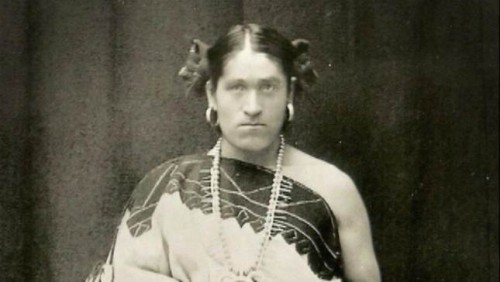Gay rights: let indigenous people lead the way
 More and more, modern people are turning to indigenous teachings to learn a better way to live. Perhaps acceptance of gay rights could be the next lesson.
More and more, modern people are turning to indigenous teachings to learn a better way to live. Perhaps acceptance of gay rights could be the next lesson.
Here are a few things Native Americans have already contributed:
- The Great Law of Peace of the Iroquois Nation was the model for the United States Constitution.
- Native Americans were the original environmentalists. Care of the earth was so ingrained in their way of life that they didn’t even have a separate word for it.
- In making decisions, Native peoples would first ask how it would affect their descendents 7 generations into the future.
- Though they generally had separate roles, women were honored members of most tribes and could own property.
- Healing the whole person, body, mind and spirit was how they approached illness.
- The earth, and women, were viewed as sacred.
- They taught acceptance instead of judgment.
Many Native American and First Nations cultures accepted gender variation. In fact, lesbians and homosexuals were often considered sacred.
Yet, in spite of the U.S. Supreme Court’s landmark 2015 ruling in Obergefell v. Hodges conferring the right to marry to same-sex couples, many in the United States still oppose same-sex unions.
We have so much to learn.
The Zuni Man-Woman
One of the best examples of the acceptance of sexual variance is the revered Zuni Man-Woman, We’Wha. [pronounced WAY-wa].
Born as a man, yet adopting women’s ways and dress, We’Wha was an honored member of the Zuni. He excelled at weaving and pottery, and was a recognized expert in Zuni religion. In 1886, he was sent to Washington, D.C. as a representative of the Zuni.
That We’wha became a representative of the Zuni tribe makes it clear that gender and sexual differences were well-accepted by the Zuni.
You can read more of We’Wha’s story in the book The Zuni Man-Woman [Paperback] [1992] Will Roscoe.
Prior to contact with European missionaries, most Native American tribes were very accepting of sexual variation. In fact, some considered there to be four sexes:
- Men born as men and living as men
- Women born as women and living as women
- Men born as women but living as men
- Women born as men but living as women
All were accepted and held a place of honor in their societies. Many tribes had their own terms for referring to them: for example, the Lakota [Sioux] referred to them as winkte; the Navajo used the term nádleehí.
In addition, prior to European contact, a multiple gender tradition existed among the Kanaka Maoli people’s of Hawaii; and the Incas worshipped a dual-gendered God.
Anthropologist Walter Williams notes that Christian missionaries outlawed Native American same-sex marriage in the 20th Century and actively sought to remove the practice.
Early anthropologists who observing Natives adopting the dress of the opposite sex used the word berdache [roughly translated to “kept boy”] to describe them. The term was derogatory, so in 1990 an indigenous lesbian gay gathering chose the term “Two Spirit” to replace berdache.
Many Native peoples have adopted the English term “Two Spirit” to describe the entire spectrum of gender and sexual expression.
Two Spirit refers to having both masculine and feminine housed in the same body. Prior to contact with Europeans, Two Spirits were respected and influential members of the community.
“They are usually regarded as having special sensory qualities: they see, hear, taste, smell and feel things others can’t. This is because the Two Spirit people are seen to be linked to their ancestral spirits. They interpret visions. They are peacemakers. They exist to honor all living things, past and present, as sacred.” Dr. Zuleyka Zevallos in “Rethinking Gender and Sexuality”, September 9, 2013
Not every tribe today embraces Two Spirits. In my experience, the greater the Christian influence on Native tribes, the less tolerance there is of sexual variation.
The “Two Spirits” documentary
The documentary “Two-Spirits” is the story of Navajo Fred Martinez, a nádleehí who was one of the youngest hate-crime victims in modern history, murdered at the age of 16 just for being who he was.
The Navajo used the word nádleehí to describe a male-bodied person with a feminine nature and, according to ancient Navajo culture, that was a special gift:
“The masculine and feminine together are sometimes reflected so completely in the body of one person it’s as if they have two spirits.”
The term nádleehí means “one who constantly transforms.”
“In Navajo teaching, in the old traditional world, there were four basic genders,” explains Wesley Thomas, Navajo scholar from Tsaile, Arizona, in the Two Spirits documentary.
“Women are the first gender, because Navajo is a matrilineal society. Men are the second gender; and the third gender is the nádleehí, who is born as a male person but functions in the role of a girl in early childhood and in the role of a woman in adulthood.
“And it’s just the opposite for the fourth gender, where they were born biologically female but functioned in the role of a boy in early childhood and matured into a man, and conduct their life in that gender identity.”
“I am proud to be Two Spirited, I am proud to be Native, and no one can change me nor the way Creator sent me to this world to be.” William Hawk.
Let’s hope that over time our modern culture will embrace this kind of acceptance.
Sources for this post:
http://othersociologist.com/2013/09/09/two-spirit-people/
http://everydayfeminism.com/2015/10/consider-two-spirit-identity/
http://thespiritscience.net/2016/01/06/breaking-the-gender-binary-the-navajo-had-four-genders/
http://thespiritscience.net/2016/01/06/breaking-the-gender-binary-the-navajo-had-four-genders/
http://disinfo.com/2013/03/third-fourth-and-fifth-genders-in-cultures-around-the-world/
http://plainshumanities.unl.edu/encyclopedia/doc/egp.gen.004
Molly Larkin is the co-author of the international best-seller “The Wind Is My Mother; The Life and Teachings of a Native American Shaman” and other books on health. She is passionate about helping people live life to their fullest potential through her classes, healing practice and blog at www.MollyLarkin.com

